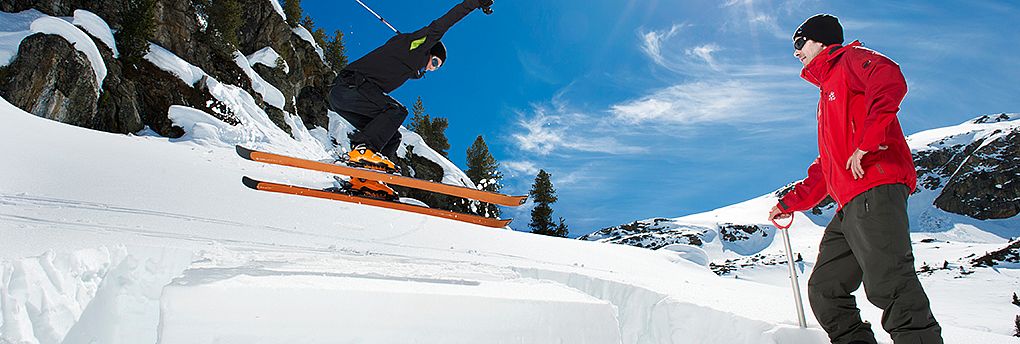
How we conduct our research
The SLF researchers make observations, conduct experiments, run models and share information about snow, avalanches, natural hazards, mountain ecosystems and permafrost. They use this work as the basis for developing solutions to problems faced by society.
Climate change, population growth, and changes in land use create new problems, such as the increasing incidence of snow deficiency at ski resorts, melting permafrost and an increasing number of roads and buildings that need to be protected against avalanches and other natural hazards. To ensure that society is able to respond to these problems effectively, our researchers monitor the condition and ongoing development of snow, permafrost and natural hazards, the protection forest, and natural and cultural landscapes in the mountains.
Environmental monitoring plays a key role in this. In essence, we serve as keepers of environmental records. For the associated long-term research, we take action for experimental purposes, e.g. by maintaining forests in line with specific guidelines and evaluating long-term effects. Some of the SLF's data series go back more than 100 years. We evaluate millions of data points that are gathered every year and make them available to interested users.
Better understanding leads to better protection
Our scientists research natural phenomena with the aid of scientific experiments on a large and small scale (see 'Large-scale research facilities'). They share the results with colleagues all over the world in specialist and scientific journals.
Using the data gathered, our scientists create and optimise computer models in order, for example, to calculate the likely path and force of avalanches, rockfalls and debris flows (software package RAMMS). Models like these help to protect human lives and infrastructure. They also prove that there is now less snow than before.
The SLF serves as a liaison between research and practice. We communicate our findings and expert knowledge in the form of reports, consultations, guidelines and advanced training and courses at universities. We provide taxpayers and authorities with information on how we use public money and regularly open our doors to visitors.